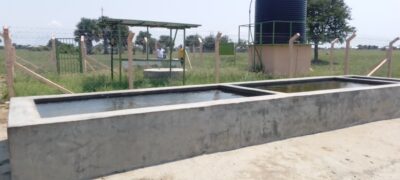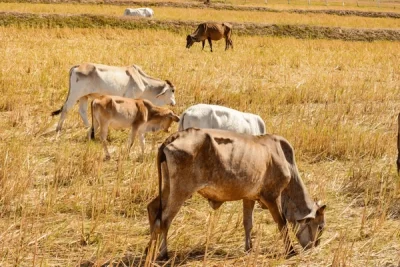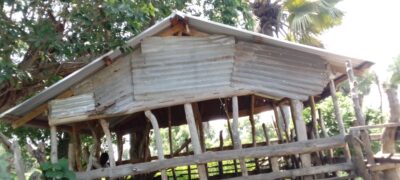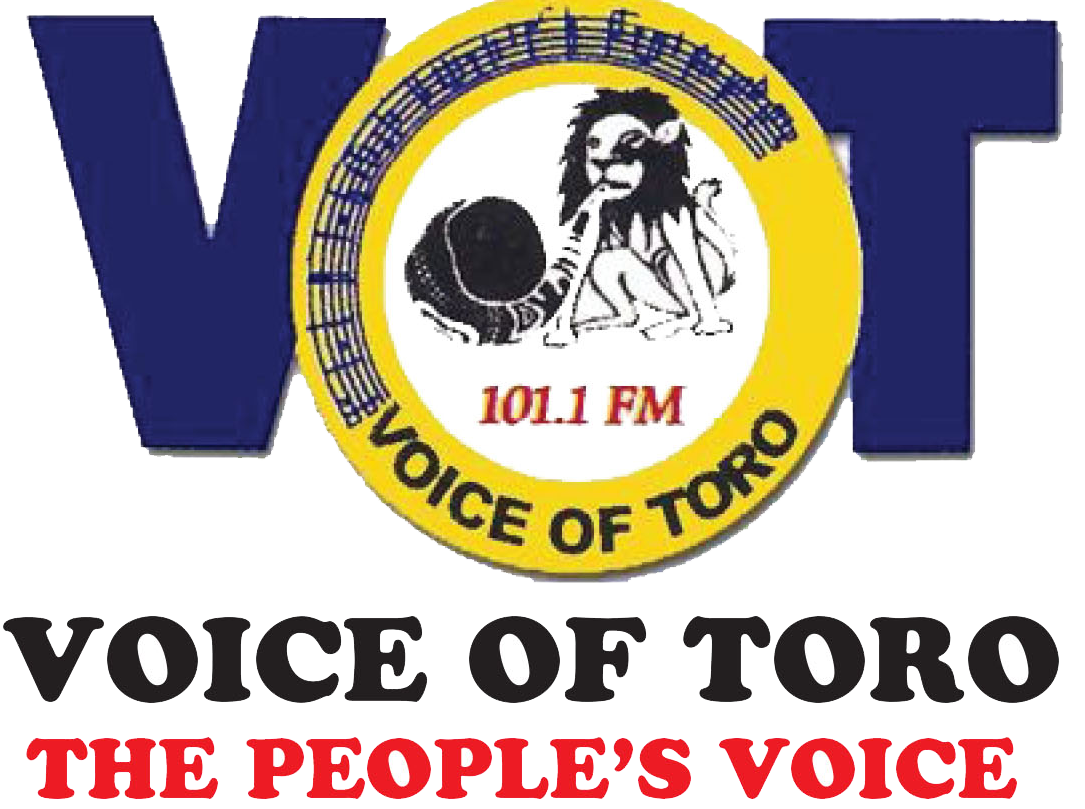Solar Energy Revolutionizing Cattle Keeping in Ntoroko District

By Musa Polite
Ntoroko District in the Western Uganda Predominantly occupied by the Batuku people who are known for cattle keeping is a scenic haven of lush green hills, sparkling Lake Albert, and vibrant communities. This rural gem is home to approximately 70,000 residents, predominantly engaged in cattle keeping – the district’s pride of the people, lifeblood and primary economic activity. However, the industry faces significant challenges, particularly energy poverty and environmental degradation.
A quiet transformation is taking place, one that harnesses the power of the sun to revolutionize cattle keeping. From irrigating pasture farms to pumping drinking water and effectively storing dairy products, solar energy has emerged as a beacon of hope for local cattle farmers, enabling them to enhance productivity and sustainability.
Energy Poverty:
Traditionally, cattle keepers rely on use of generators for water pumping into their farmland pasture and cattle boats/ troughs, and lighting. Farmers like 45-year-old Kagere Stephen struggled to access energy and water. This dependence on fossil fuels results in High energy costs as expensive and scarce fuel sources eat into already slim profit margins and emission of fossil fuels into the environment.
Limited productivity due to manual labor and lack of mechanization hinder efficiency while the district’s fragile ecosystem suffers from Overgrazing as un managed pastureland leads to soil degradation and reduced fertility.
Also, there is Water pollution because untreated livestock waste contaminates nearby water sources and also increased greenhouse gas emissions exacerbate droughts and extreme weather events.
“We’d spend hours fetching water for the cows, this means low productivity in terms of milk products and our milk would spoil due to lack of cooling mechanism. We couldn’t afford fuel for generators, and our profits were minimal,” Kagere recalls.
Kabakama Kedress, another cattle keeper in Rwebishengo says previously she lost close to fifteen cows in two months when the district was hit by drought for close to a year because the animals couldn’t get pasture and all the dams were dry.
Statistics from the district production office show that Herders lost more than 500 head of cattle following drought in 2019 with the most affected areas are Rwebisengo, Kibuuku, Kanaara and Bweramule sub-counties while in 2021 Ntoroko District lost more than 15,000 cattle due to prolonged drought

Cattle Grazing in a drought affected farmland
Solar Energy: A Beacon of Hope
Ntoroko District’s cattle keepers are embracing solar energy, revolutionizing their livelihoods and as the district harnesses the power of the sun, the future looks brighter.
As Ntoroko District harnesses the power of the sun, cattle keeping is becoming more efficient, profitable, and environmentally friendly. Solar energy is revolutionizing the industry, empowering communities, and ensuring a sustainable future, inspiring other rural communities to adopt renewable energy and thrive.
Innovative entrepreneurs and organizations plus government have introduced solar-powered solutions: Dr. Baguma Patrick Bagonza, the Ntoroko district production officer says government through micro scale irrigation program has co-founded solar powered systems on some farms with government providing 75% of the fund needed while farmers providing the remaining 25% and according to him, over fifteen cattle keepers have installed this solar system on their farms across the district and there is no longer fear of harsh weather conditions that would see many cows dying.
Production officer explaining
“Ministry of water and environment in the directorate of water resources management has also established a number of solar powered troughs along strategic locations on river Semuliki to reduce animals’ pressure on the river and these have enabled animals to get clean water from the solar powered troughs.” noted Bagonza
He says the other support come from non-government organizations like world wide fund for nature, Toro Botanical gardens, NRDI who construct solar powered systems for public mostly along river Semuliki to prevent cattle from going to drink from the river because when they keep going there, they destroy the river bank. This has solved the issue of cattle dying while trying to drink from the river and others being eaten by crocodiles.
“Most interesting with the NGO’s solar systems, they target many people, meant for public use. People from one or two villages bring their cattle to drink on the general public solar powered trough.” noted Baluku
The third category of how people get solar powered systems is wealthier private/ individuals through recommended solar energy companies set up their own equipment at their farms.
Cattle drinking on the solar powered trough in Bweramule
“Solar-powered milk cooling systems reduce spoilage and increase income while Solar-powered water pumps reduce drought effect on pasture and provide water for the animals, boosts irrigation and reduce labor, Solar-powered lighting, enhances security at the farm and in the calf pens and extends working hours.” he asserted
How it works.
Mr. Baguma Patrick Bagonza, the Ntoroko district production officer says one should have a water source/well which must be approved by the district engineer.
According to him, a submersible solar pump which is dipped into the well underground pumps Water from underground into the reservoir Tank which supplies to the cattle wells/troughs strategically placed at different positions around the farm.
“The wells have a stopper that is used to control water supply from the tank and when the wells are full, the stopper can be closed to avoid wastage. At the far end of the well, there is a tap and when the wells are dirty, the tap is opened to empty the wells for cleaning.”
For those who prefer extending the water to the pastures, Businge says it needs hydrants which are places at different places to pick water from the reservoir tank and after fixing a drug horse on the hydrant, they supply water all over pasture and this gives foliage backup to the cattle farmers.
Chairperson Rukora water management committee explaining how the system works
Has it really helped?
Miss Baguma Lea, a local cattle keeper from Haibale, Bweramule Sub County with over 270 cows transitioned to solar energy:
“I am an ambassador for solar energy because solar power has transformed my farm. I save money on fuel, and my milk production has increased by 30% because of pasture sustainability. I no longer have issues of lighting in the calve pens like previously.”
’’These are three solar panels each 260 watts and we no longer suffer water scarcity and when the drought is persistent, we irrigate pasture and the cows are able to eat and drink year in year out while The same solar is connected to the calve sheds for lighting.’’ Miss Lea noted

A calve pen with solar bulb
Muhumuza Sam, another herder says he takes at least fifty litters of milk to the cooling machine and he no longer suffer loses like in the past when milk would go bad because he never had ways of preserving it. “Am now assured of a monthly income. This wasn’t the case before” noted Sam
William Kasoro, the Ntoroko district chairperson says Herders in 2021 lost more than 15,000 cattle due to prolonged drought, but now many have embraced the solar energy and for the last two years, he has received a report of around only 98 cattle dying and he believes this will come to zero as more people embrace the new technology. He also believes it has improved cattle productivity and increased milk production, hence contributing to food security.
The new technology and associated Challenges
Despite all the advantages, the solar powered systems mostly those that were constructed by government and NGO’s for public have some of the challenges that need to be streamlined.
Mugisa Edison, chairperson water user committee at one of the solar powered troughs says out of the nine member committee to look after the trough that was built for them by world wide fund for nature, she takes the responsibility alone.
“we agreed that every (Muhima), a name normally given to herders should contribute five thousand (5000 shs) towards maintenance in case of a break down at the facility but I have registered only mine for the last six months yet cows from around three villages use this well” he noted
At the trough that was constructed by the ministry of water and environment in Rwebisengo, some equipment need repair but Kaija Emmy, a care taker of the trough says people are reluctant to contribute towards the cause yet the equipment is tearing away.
Mr. Baluku Rojas, the Ntoroko district agriculture engineer says Initial Cost of the Investment is expensive because of the upfront cost of solar panels, installation, and associated equipment.
“Solar powered systems are Weather Dependent and reliant on sunlight, which can be inconsistent due to weather conditions, this mean that when the water in the reservoir tank is used up and the weather isn’t sunny, there is some inconvenience.” noted Baluku
Scaling up
Despite the government’s component of co-funding under the World Bank funded U-GIFT program, Businge Patrick, the Ntoroko district production officer says the district has only supported nine farmers and only five are dealing in livestock. This means many people who have benefited from solar energy are those helped by NGO’s and those who have set the equipment on their own.
Mr. Kamanyire Wazo, a local herder with over 200 cows says he needed to first wait for success stories. He says he is now convinced because fellow herders who embraced the new technology, it has proved to be cost effective in the long run.
“To access a solar company, we either have to go to the district and then the district people to guide us on authentic suppliers, contacting them from either Fort Portal or most of them with equipment from Kampala becomes expensive. This process involved there in scares away many of us.” Miss Agnes Tibakanya noted.
Dr. Businge says setting up a drughourse solar system that is commonly used in cattle keeping requires between seven (7) to fifteen (15) million or even more and most of the people see it as expensive.
“Adoption was too low previously, people believe in first seeing but as of now, we have over 150 people who have shown interest in benefiting from the UGIFT program and over ten (10) have approached our office to help them set their own private arrangements at their firms.” said Dr. Businge.
Voice/ Baluku explaining
Kasoro Williams, the Ntoroko district chairperson says it took them effort to sensitize the people about the new technology but the gospel is now taken.
“People didn’t take the message at first, they needed time to learn from those that embraced it fast. By the way to create food security in the water stressed district, others have gone ahead to extend solar energy technology to crop farms mostly horticulture while others use solar to pump water into fish ponds and it has proved to be effective.” chairman noted
Barriers to uptake
Dan Kagarura, a solar equipment supplier with TUR Holdings limited has supplied to individuals and NGOs that have installed solar systems in Ntoroko district, he gives his view what can streamline the business and solve the challenges involved there in.
He starts with the new Energy Policy 2023 which states that Uganda is prepared to embrace new alternative energy technologies. Dan observes that although standards for solar systems and components exist, these are reportedly rarely enforced, partly due to limited capacity at the Uganda National Bureau of Standards, particularly outside Kampala. Moreover, the UNBS has limited authority to seize substandard items since it usually only has recourse to this when products present a health risk.
“Almost all solar systems and components are imported, and the UNBS relies on product testing and certification performed by third parties outside the country, notably in China. Unfortunately, this arrangement appears to be ineffective against imports of counterfeit products.” noted Kagarura
“Another major barrier preventing greater uptake of individual solar systems is cost.” added Dan this has been overcome somewhat by distributors offering the possibility for customers to pay over time, e.g. through pay-as-you-go models employing mobile money applications. However, several distributors have noted that such models are not yet well recognized by the tax authorities, which count the total value of contracts as income received at the time of signature.
He explains that Import taxes also add to the cost of solar systems. While exemptions exist, it has often been difficult for importers to benefit from them in practice. Part of the problem appears to be the complexity of the rules, which in turn may contribute to inconsistency in their reinforcement. “For example, regulations currently allow solar lanterns to be imported tax-free only if the solar panel is attached to the lamp, but not if it is separate and hybridized for grid charging.” he added
Maintenance
Mugisa Edison and Kabakama Kedress witnesses their good collaboration with the production department of the district which connects them to the suppliers whenever there is a challenge.
“My supplier called TUR holdings is the one that does maintenance at my solar system. Whenever I get a challenge, I have their numbers and they are always quicker to come.” noted Kabakama
For government set solar systems, Baluku says they do awareness creation and teach the herders how to operate the solar system before enrolling them. He says they also do periodical visits atleast twice quarterly to assess and give them operation manuals on how to run the system.
“In case one gets a challenge, they contact us and we connect them to the suppliers, that’s after the six months gestation period when the supplier is maintaining the equipment at no cost.” noted Baluku
Energy Policy for Uganda (2023)
The Cabinet of Uganda adopted the Energy Policy in April 2023 and it was launched in September 2023. Regarding renewable energy, the policy states that “The government shall promote the sustainable development and utilization of all renewable energy resources in a socially and environmentally responsible manner” (MEMD, 2023).
Solar
Uganda’s solar global horizontal irradiation potential is between 4.4 kWh/m² and 6.3 kWh/m² per day, with around eight hours per day of sunshine (IRENA, 2021). Vision 2040 calls for 5000 MW of installed solar PV capacity to be developed by 2040.
There are currently at least five grid-connected solar PV plants with individual capacities of 10 MW or more for a cumulative capacity of over 60 MW, accounting for 4.5% of the country’s total grid-connected capacity in 2022.
It is estimated that there are more than 30,000 individual solar PV systems installed on households and institutions such as schools and hospitals, with a cumulative installed capacity of 1.25 MW, mostly located in rural regions (IRENA, 2021).
According to the Uganda Solar Energy Association, more than 200 companies offer off-grid solar PV systems and products in the country.
This story was produced with support from African Center for Media Excellence in partnership with the Charles Stewart Mott Foundation.
Ends


